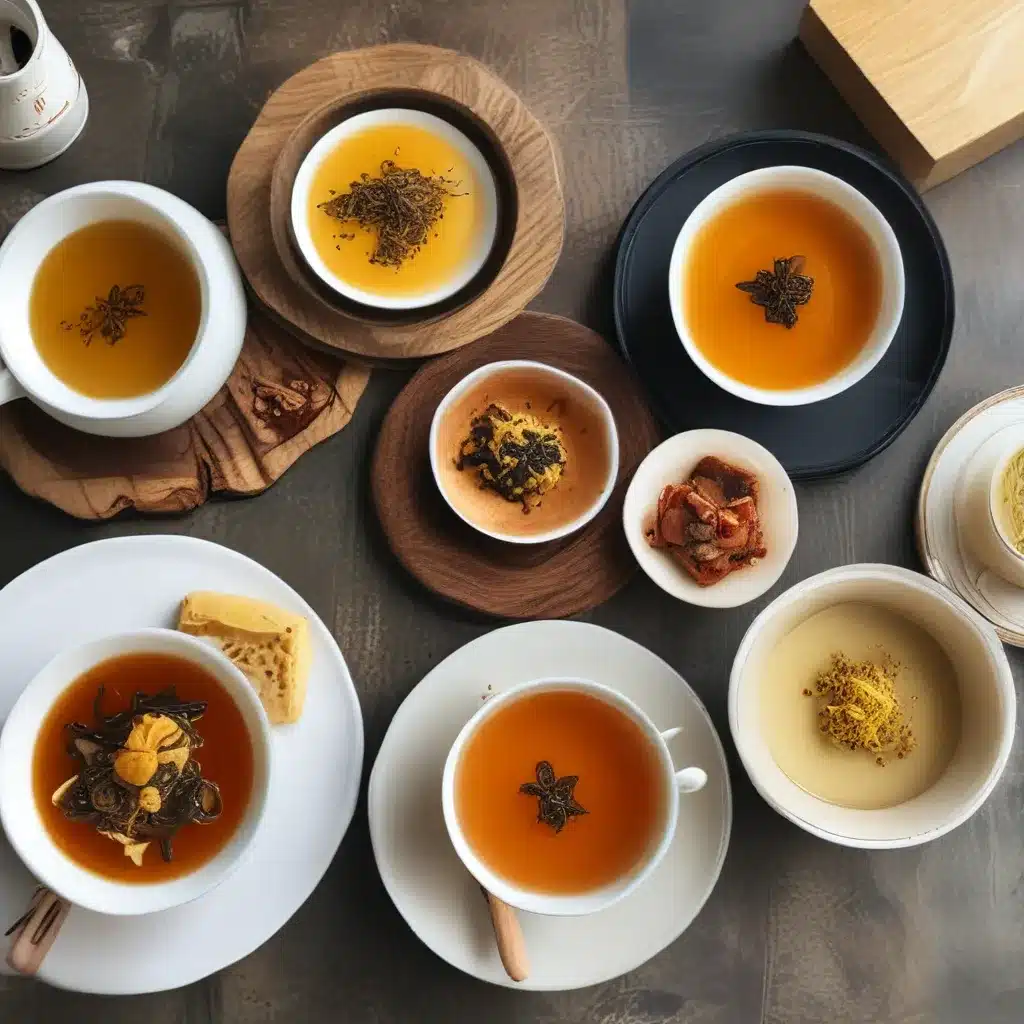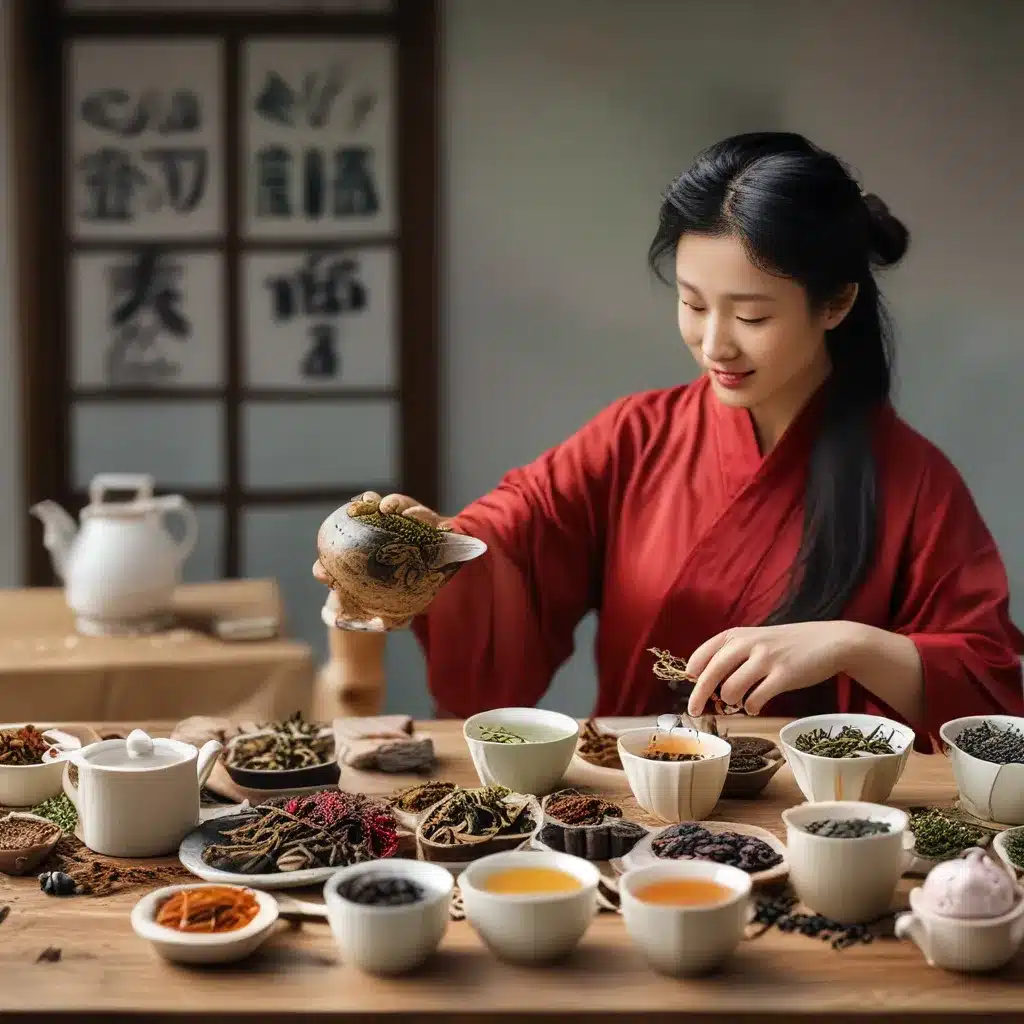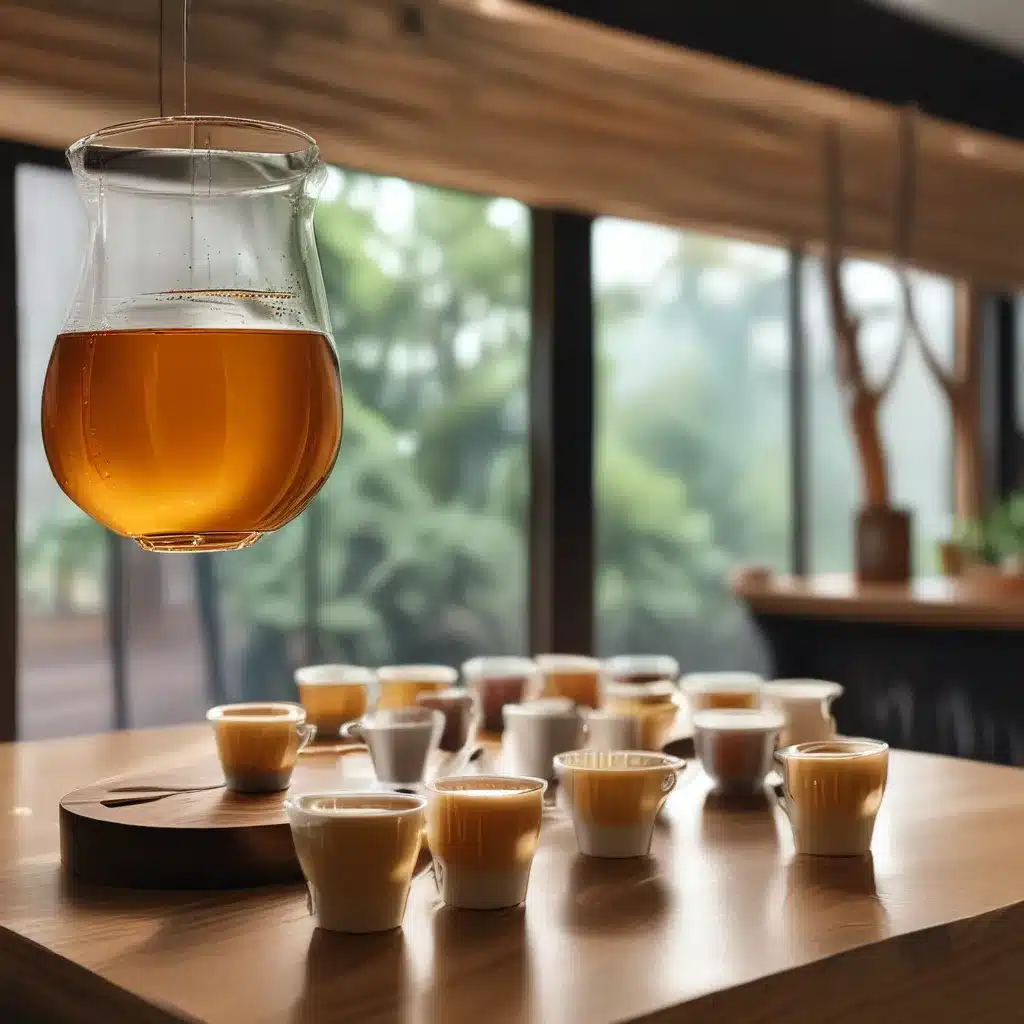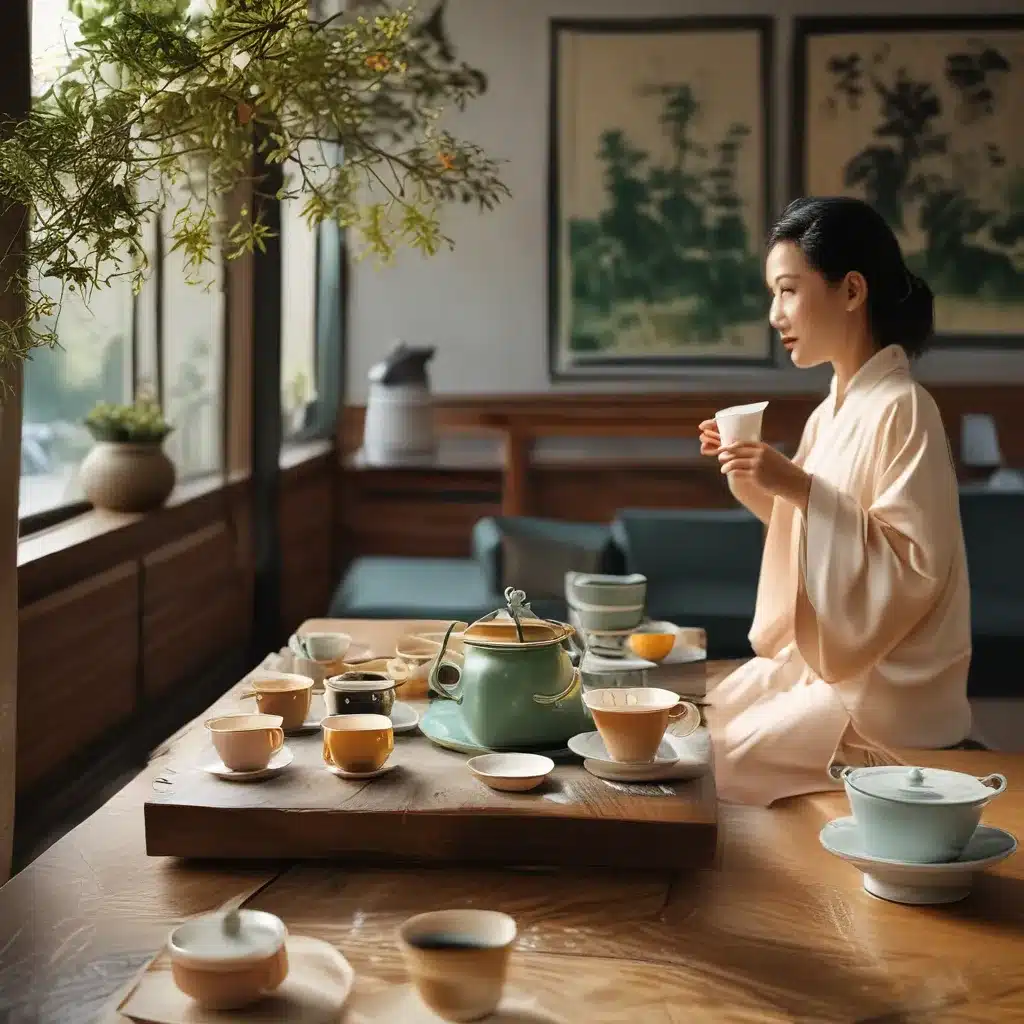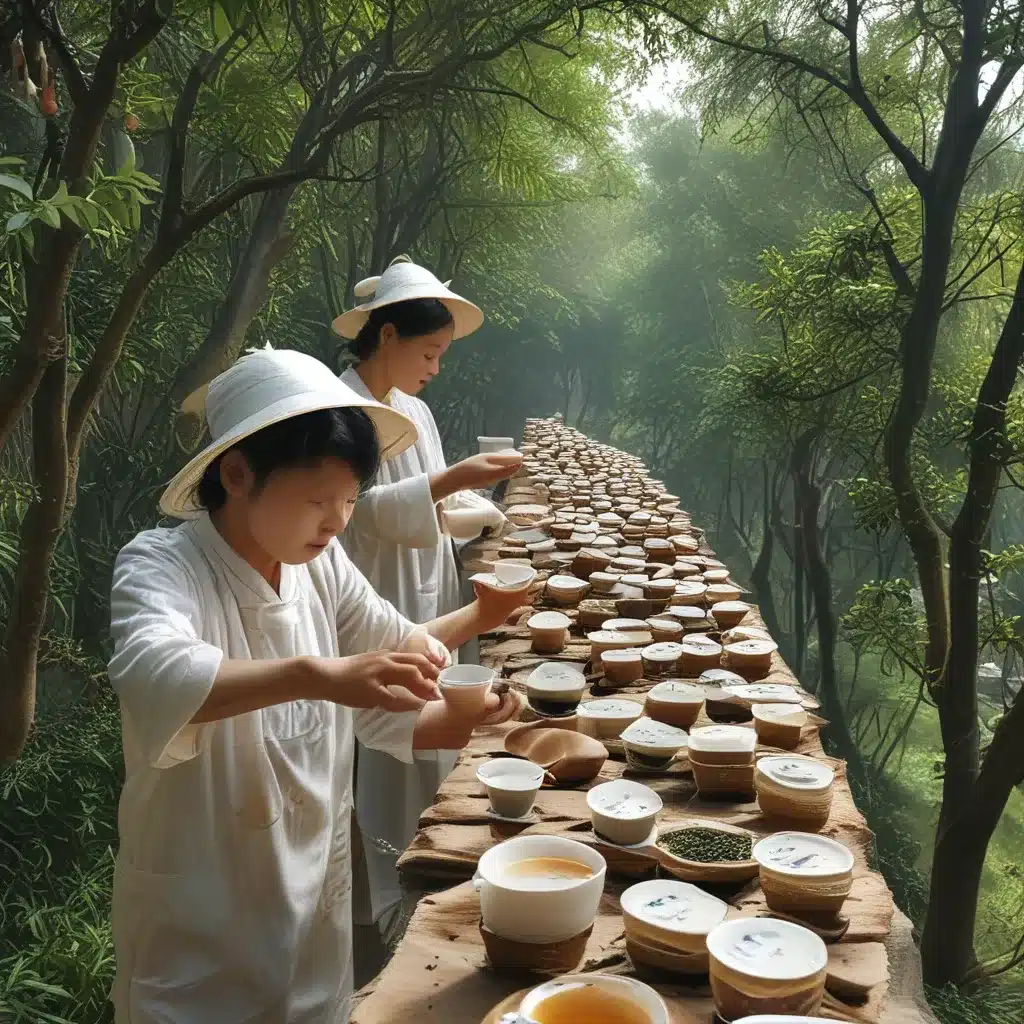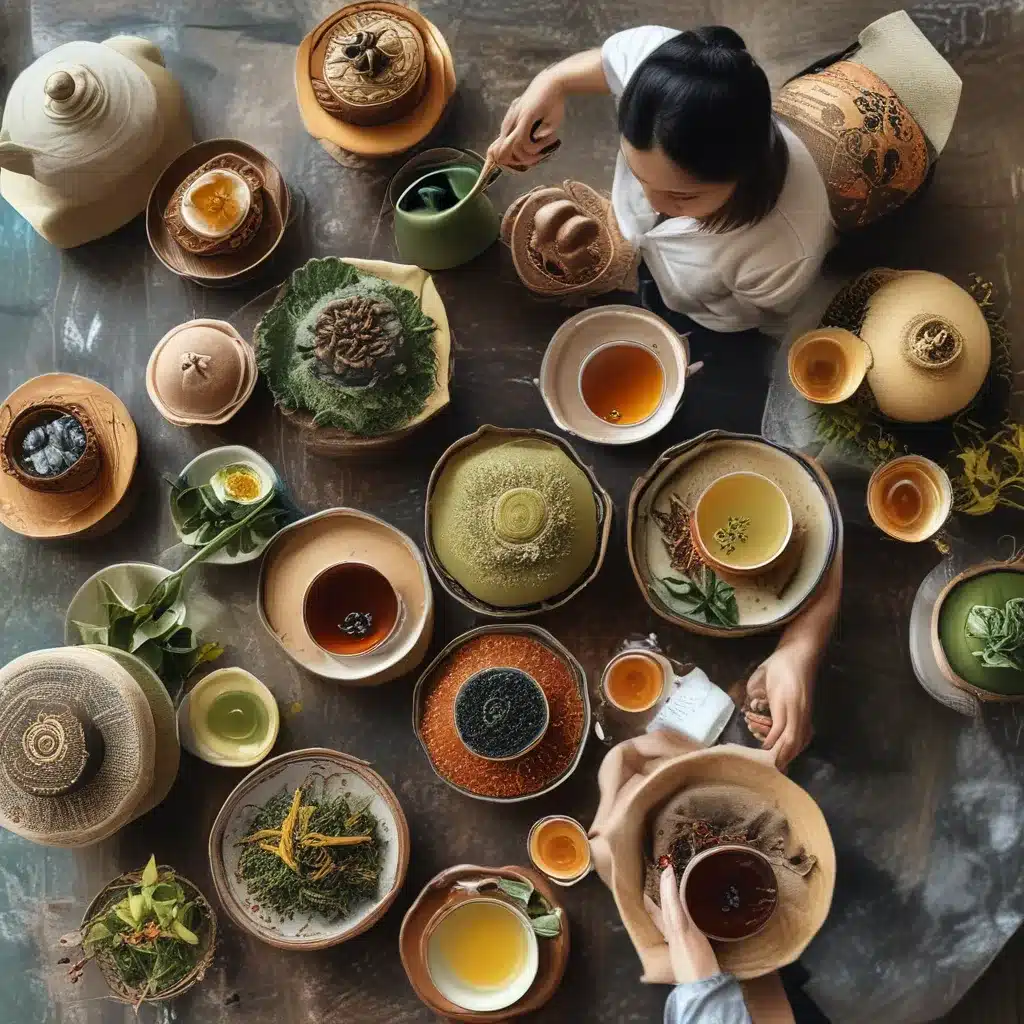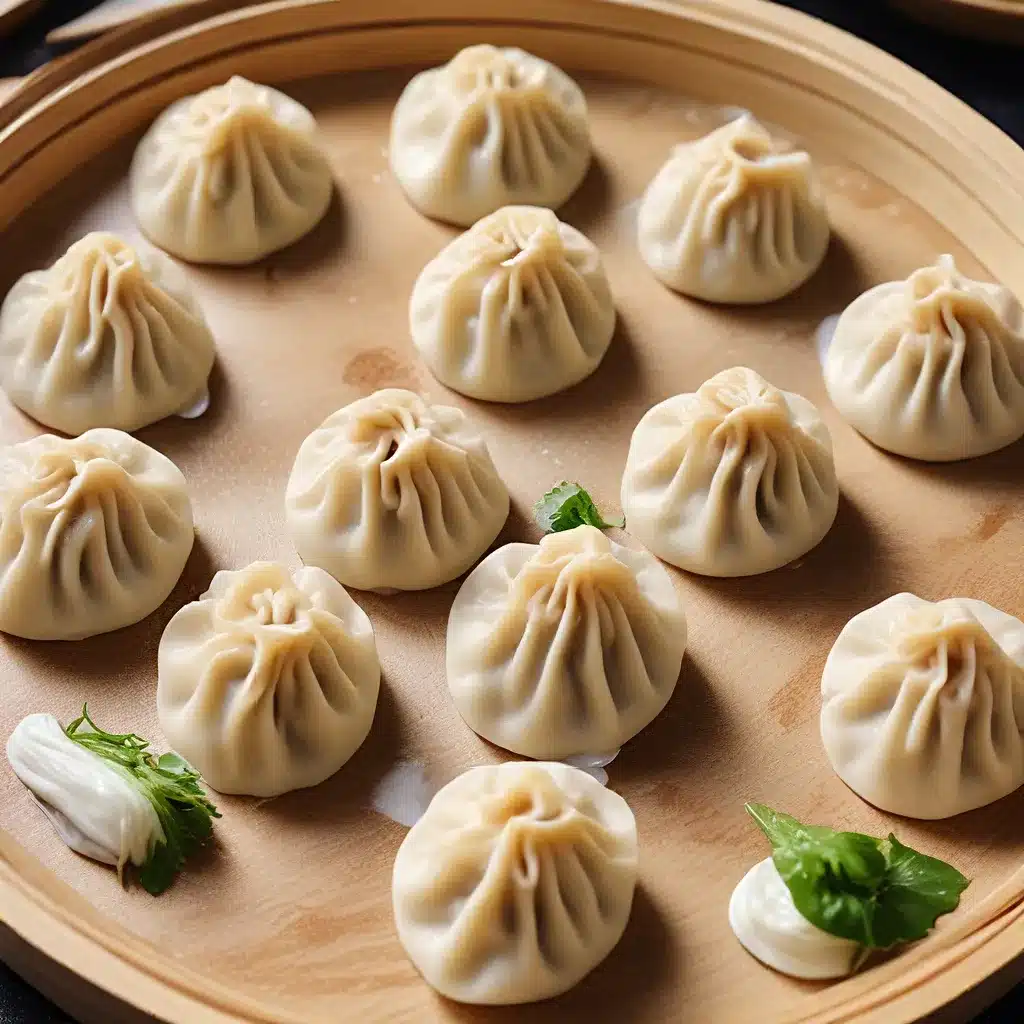
The Irresistible Allure of Dumplings
What is it about the humble little dumpling that has such an irresistible charm? Whether boiled and served in a savory broth, steamed and accompanied by a spicy dipping sauce, or pan-fried to crispy perfection, this delectable morsel has a way of captivating palates across the globe. Even within China, the country where the dumpling originated, each region has put its own unique spin on this timeless delicacy.
In the coastal city of Shanghai, the size and shape of the dumpling is of particular importance. Larger dumplings are typically served as a main course, while their smaller counterparts make for the perfect breakfast or light lunch. And the art of folding these miniature packages of flavor? Well, that’s a skill that requires years of practice to master.
At the acclaimed Taiwanese restaurant chain Din Tai Fung, famous for its xiao long bao soup dumplings, each and every morsel is crafted with surgical precision. The dough is perfectly portioned at 5 grams, the filling weighed out to 16 grams, and the final product boasts no fewer than 18 delicate pleats.
Now, I know what you’re thinking – that level of perfection is all well and good for the professionals, but what about the rest of us mere mortals? Fear not, my fellow dumpling enthusiasts, for there are plenty of accessible techniques that can help us mere mortals craft dumplings worthy of even the most discerning Shanghai palate.
Fold Like a Pro: Mastering the Art of Dumpling Assembly
When it comes to assembling dumplings, the key is to find a folding technique that feels natural and comfortable for you. While the intricate pleats and twists seen in high-end establishments may seem daunting at first, there are several beginner-friendly folds that can produce equally impressive results.
Let’s start with the classic Half-Moon fold. This simple technique involves placing the filling in the center of the wrapper, folding it over, and sealing the edges. It’s a great starting point for novice dumpling makers, and the resulting shape is both visually appealing and practical for pan-frying or boiling.
Next up, we have the Silver Ingot fold. This one builds on the Half-Moon, adding a bit more complexity with a rounded “bonnet” shape created by bringing the two corners together. It’s a wonderful option for wontons, as the more tightly sealed shape helps prevent leakage when served in broth.
For those looking to add a bit more flair to their dumplings, the Two-Pleat and Four-Pleat folds are sure to impress. By pinching pleats along the sealed edge, you can create a delightful ruffled effect that not only looks stunning but also helps to lock in those precious juices.
And speaking of pleats, the One-Directional Pleat is a technique that, with a bit of practice, can elevate your dumplings to true artisanal status. This method involves pleating the wrapper in a continuous line, working your way from one corner to the other. The result is a elegant, fluted design that’s sure to have your dinner guests marveling at your dumpling prowess.
If you really want to channel your inner Shanghai dumpling master, try your hand at the Gok Jai pleat. This traditional Cantonese fold, which I learned growing up, involves a series of diagonal folds that create a mesmerizing twisted rope effect around the edge of the dumpling.
And for the grand finale, we have the Bao fold – a technique often used for delicate soup dumplings like xiao long bao. This method requires pleating and twisting the dough to form a compact, purse-like shape that’s perfect for trapping those savory juices.
The key to mastering these folding techniques? Practice, practice, practice. And don’t be afraid to experiment to find the method that feels most natural and comfortable for you. After all, the pleats are mostly for aesthetics – the dumplings will still taste delicious, even if they don’t look like they came straight out of a Shanghai restaurant.
Filling the Void: Crafting the Perfect Dumpling Stuffing
Now that we’ve covered the art of folding, let’s turn our attention to the equally important task of crafting the perfect dumpling filling. Because let’s be honest, no matter how beautifully you’ve pleated and twisted those wrappers, if the stuffing isn’t up to snuff, your dumplings just won’t be able to reach their full potential.
When it comes to Shanghai-style dumplings, the traditional filling is a simple yet flavorful combination of ground pork and shrimp. The pork provides a rich, savory base, while the shrimp lends a delicate sweetness and tender texture. But of course, this is just the starting point – the real magic happens when you start to layer in aromatic ingredients like ginger, garlic, and scallions.
For a little extra dimension, I like to sauté some thinly sliced leeks and grated carrot before incorporating them into the filling. The sweetness of the carrots and the subtle onion flavor of the leeks help to balance out the richer pork and shrimp.
And let’s not forget the importance of that all-important binding agent – the soy sauce, rice wine, and sugar that help to hold everything together and infuse the filling with an irresistible umami punch. A dash of toasted sesame oil for fragrance, and you’ve got yourself a dumpling filling fit for the most discerning Shanghai connoisseur.
Of course, the beauty of dumplings is that they’re infinitely customizable. If you’re not a fan of shrimp, feel free to substitute ground chicken or even finely chopped mushrooms for a vegetarian twist. The key is to strike a balance between the savory, the sweet, and the aromatic – and to never be afraid to experiment until you find the perfect flavor profile for your palate.
The Art of Assembly: Bringing it All Together
With our dumpling folding techniques and flavor-packed fillings all squared away, it’s time to put our skills to the test and assemble these delectable parcels of joy. And let me tell you, there’s something truly magical about that moment when you take that first perfectly pleated wrapper, spoon in your carefully crafted filling, and seal it all up into a neat little package.
The process is surprisingly simple, once you get the hang of it. Start by lightly dusting your work surface with cornstarch to prevent the wrappers from sticking. Then, place a small spoonful of filling in the center of the wrapper, being careful not to overstuff. Brush the edges with a bit of beaten egg to help them seal, and then fold the wrapper over into a half-moon shape, pinching the edges to secure.
For those who want to get a bit more creative, you can try your hand at some of the more intricate folds we discussed earlier. The key is to go slowly, take your time, and don’t be afraid to experiment. With a bit of practice, I guarantee those beautiful pleats and twists will start to come together like second nature.
And let’s not forget the importance of keeping those finished dumplings happy and healthy. As you assemble each one, be sure to give them a light dusting of cornstarch to prevent sticking, and consider refrigerating any that you won’t be cooking right away. That way, when you’re ready to serve, you can simply boil, steam, or pan-fry them to perfection.
Speaking of cooking, that’s a whole other art form in and of itself. But fear not, my fellow dumpling devotees – I’ll be diving into the ins and outs of preparing these delectable dumplings to golden, juicy perfection in the next section. Because after all, what’s the point of mastering the art of the fold if you can’t then elevate those dumplings to their full culinary glory?
Bringing the Dumplings to Life: Cooking Techniques to Try
Now that we’ve covered the ins and outs of dumpling assembly, it’s time to turn our attention to the all-important task of cooking them to perfection. Because let’s be honest, no matter how expertly you’ve folded and filled those delicate wrappers, if you don’t nail the cooking method, your dumplings just won’t reach their full potential.
When it comes to Shanghai-style dumplings, there are a few classic preparation techniques to choose from, each with their own unique charm. For a classic soup dumpling experience, you can’t go wrong with boiling. Simply drop those perfectly pleated parcels into a pot of rapidly boiling water and let them cook until they float to the surface – about 3 to 5 minutes. Be sure to remove them gently with a slotted spoon or spider to avoid breaking the wrappers.
If you’re craving a bit more textural contrast, opt for the pan-frying method. Start by lightly coating the bottom of a skillet with a thin layer of oil, then carefully arrange your dumplings in a single layer. Let them sizzle away until the bottoms are golden and crispy, then add a splash of water to the pan, cover, and steam until the tops are delicate and tender.
And don’t forget the ever-popular steaming option. This gentle cooking method is perfect for preserving the delicate flavor and texture of your dumplings. Simply arrange them in a single layer on a parchment-lined steamer basket, cover, and let the fragrant steam work its magic for 8 to 10 minutes.
No matter which cooking technique you choose, the key is to work in small batches to avoid overcrowding the pot or pan. Overcrowded dumplings are much more prone to sticking and tearing, which can really put a damper on your hard-earned folding efforts. And be sure to have a slew of tasty dipping sauces on hand – from classic chili oil to tangy black vinegar, these flavorful accompaniments are an essential part of the dumpling experience.
Of course, the beauty of dumplings is that they’re incredibly freezer-friendly. So why not make a big batch and stash some away for those days when you’re craving a taste of Shanghai but don’t have the time or energy to start from scratch? Just pop those frozen beauties straight into boiling water or the steamer, and you’ll have a piping hot, restaurant-quality dumpling feast in no time.
The Finishing Touches: Elevating Your Dumpling Dining Experience
Now that we’ve covered the nitty-gritty of dumpling assembly and cooking, it’s time to turn our attention to the all-important finishing touches that can truly elevate your dumpling dining experience. Because let’s be honest, a plate of perfectly cooked dumplings is already a thing of beauty, but with a few simple additions, you can take them to a whole new level of deliciousness.
For starters, let’s talk about the all-important accompaniments. No Shanghai-style dumpling feast is complete without a selection of flavorful dipping sauces. Think tangy black vinegar spiked with just a hint of spice, or a fragrant chili oil that will set your taste buds tinglin’. And don’t forget the trusty soy sauce – a classic pairing that never fails to enhance the natural umami flavors of the dumplings.
But the fun doesn’t stop there. Why not elevate your dumpling experience with a few unexpected additions? For example, try serving your dumplings in a delicate broth, with tender pieces of baby bok choy and a sprinkle of fresh cilantro. The contrasting textures and flavors will have your taste buds doing a little happy dance.
And let’s not forget the importance of presentation. After all, we’ve put in all this hard work to master the art of dumpling folding – why not show off those beautiful creations in the most visually appealing way possible? Consider serving your dumplings on a platter with small bowls of dipping sauces arranged around the edges, or even get creative with the way you arrange them on the plate.
Finally, no Shanghai-style dumpling experience would be complete without a refreshing beverage to cleanse the palate. Whether you opt for a fragrant jasmine tea or a chilled lager, the perfect pairing can make all the difference in creating a truly memorable dining experience.
So there you have it, my fellow dumpling devotees – everything you need to master the art of Shanghai-style dumplings, from fold to finish. Whether you’re a seasoned pro or a complete novice, I hope this guide has inspired you to get in the kitchen and start pleating, twisting, and folding your way to dumpling greatness.
And who knows – maybe one day, your dumplings will be the talk of the town, worthy of even the most discerning Shanghai palate. After all, with a little practice and a whole lot of love, there’s no limit to what you can achieve in the world of these delectable little parcels of joy.
So what are you waiting for? Grab your wrappers, gather your fillings, and let’s get to work on crafting the most mouthwatering dumplings this side of the One Dragon Restaurant. The journey awaits!

